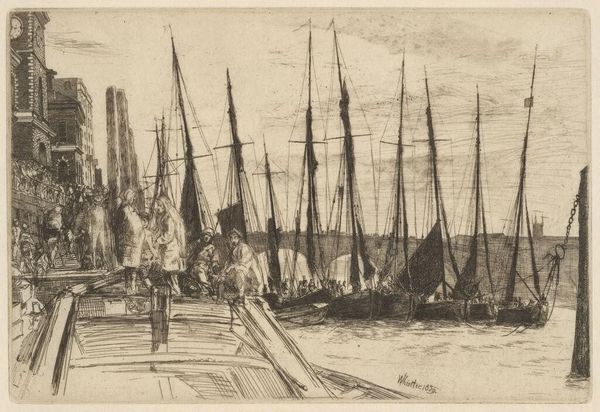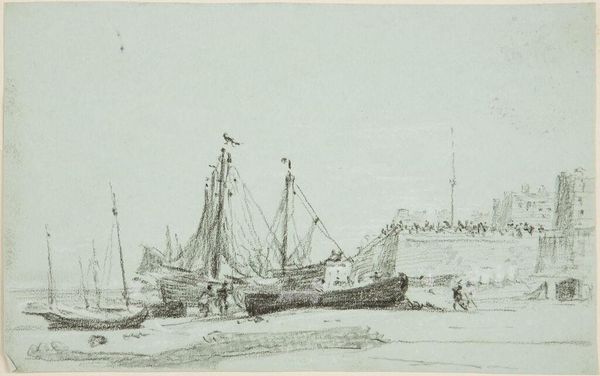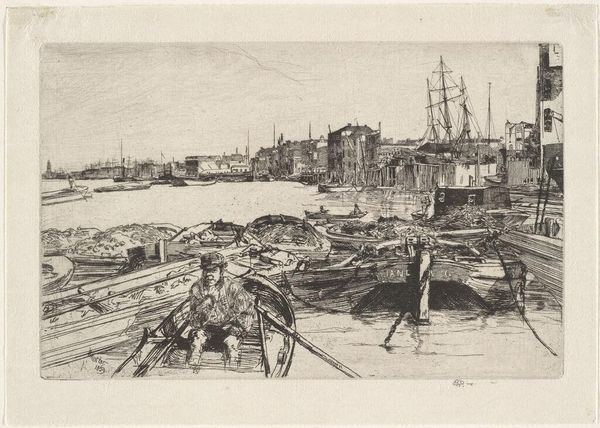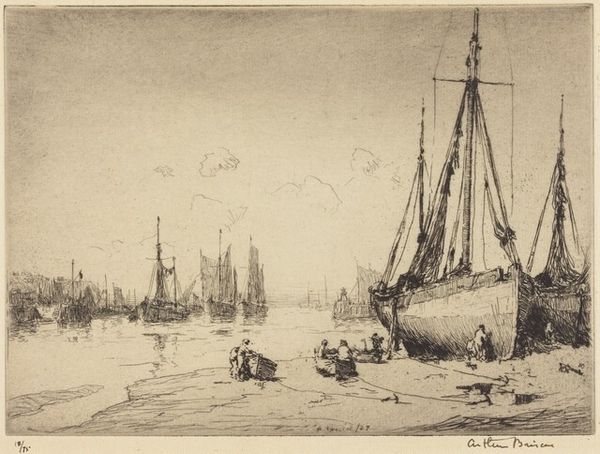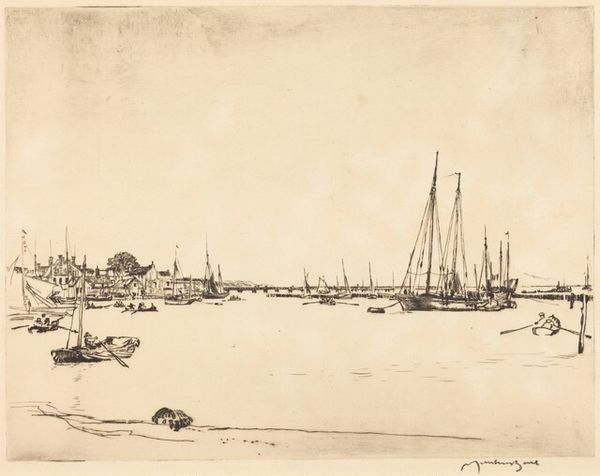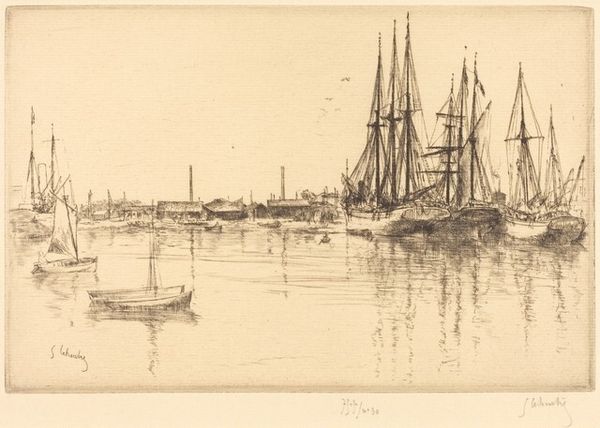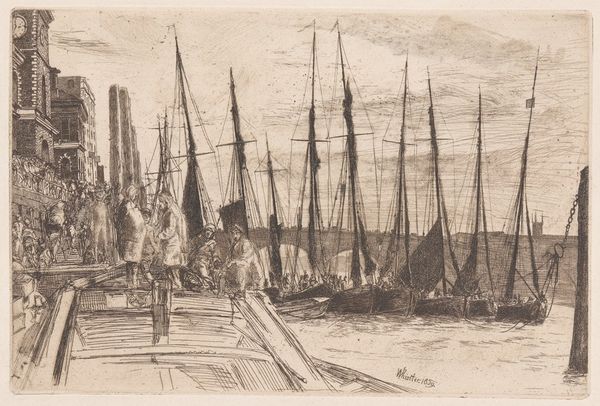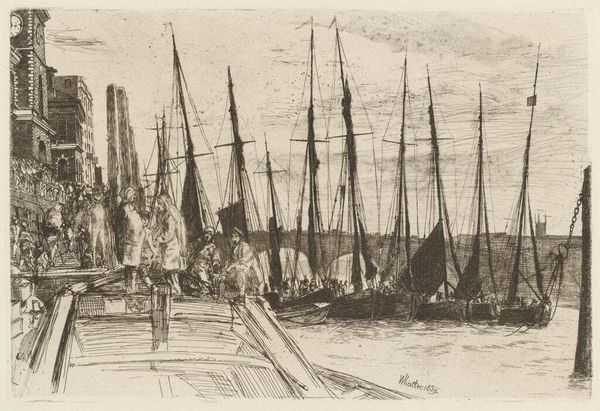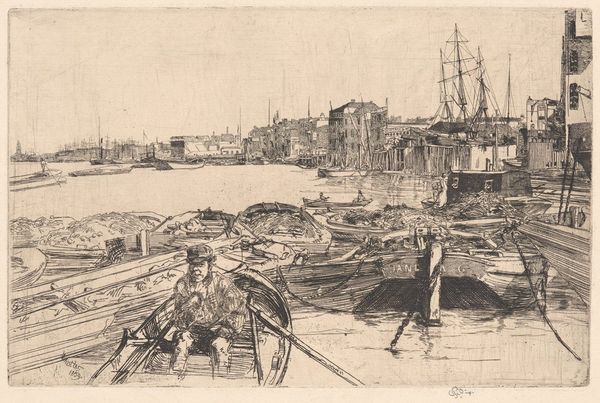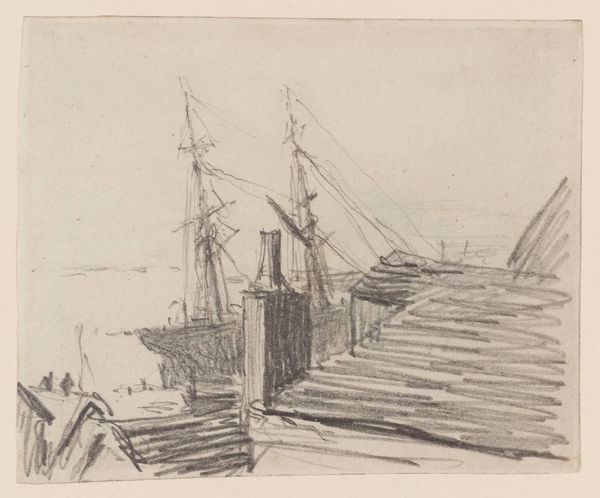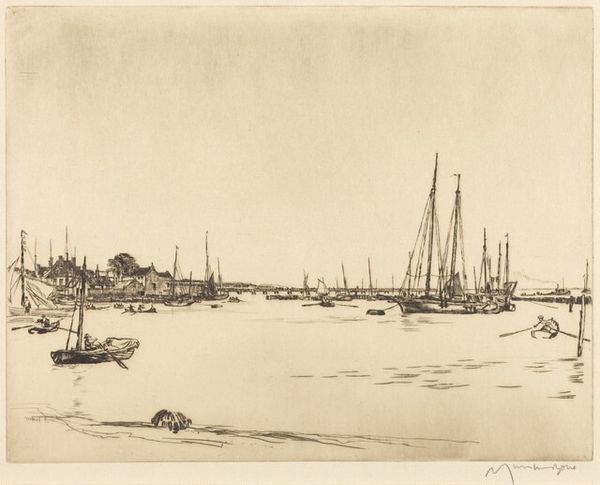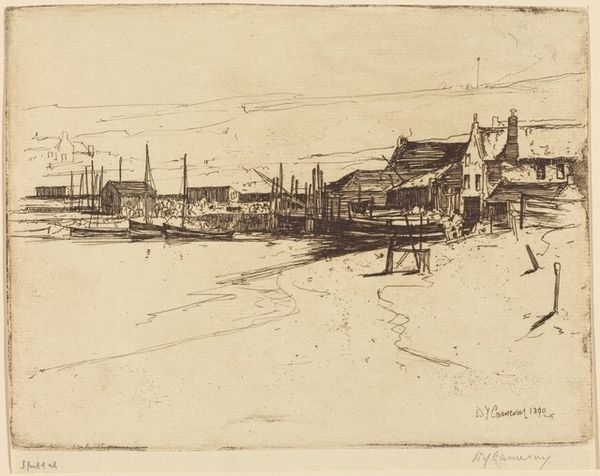
drawing, print, etching, ink, pencil
#
drawing
# print
#
etching
#
landscape
#
ink
#
pencil
#
cityscape
#
realism
Copyright: National Gallery of Art: CC0 1.0
Editor: Muirhead Bone’s 1914 etching, “Canal Boats, Near Amsterdam,” is striking in its simplicity. It feels like a quick sketch, capturing a specific moment in time. What stands out to you about the methods and meaning? Curator: Well, as a materialist, I'm immediately drawn to the *how* and *why* of its creation. This isn't just an image of canal boats; it’s evidence of labor, of Bone’s physical engagement with the copper plate and the acidic bath. The etching process itself, the biting of the metal, speaks to a specific industrial reality of early 20th-century printmaking. Editor: So, the printmaking itself is important beyond just the image it depicts? Curator: Absolutely! The image of the boats could have been a painting, but Bone chose etching. Why? Was it about the reproducible nature of prints, allowing wider circulation and perhaps even appealing to a burgeoning middle-class market for art? Consider the social context. Were these boats commercial? Leisure? That would reflect different types of industry around the canals. Editor: That's fascinating! I hadn't considered the social implications of the medium itself. So the material not only presents a cityscape, it shows how commercial factors influenced this piece? Curator: Precisely. And looking closely, the subtle variations in line weight achieved through the etching process indicate a high level of skill and labor that often goes unnoticed. Bone chose the realist landscape as a commercial path to market this labor, I argue. Editor: It is making me rethink it entirely, moving away from just the tranquil scene. Thanks so much! Curator: Indeed, thinking about the tools and production can deeply inform our understanding. This piece is less a window onto a scene and more a record of industry, both artistic and nautical.
Comments
No comments
Be the first to comment and join the conversation on the ultimate creative platform.
